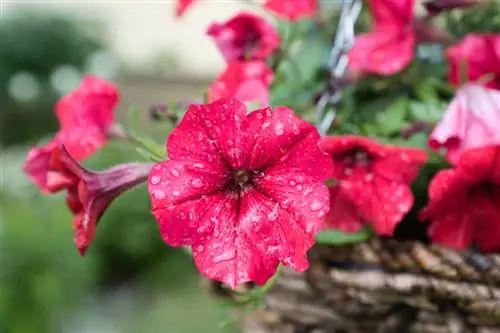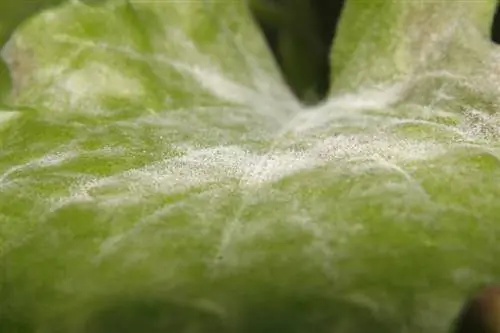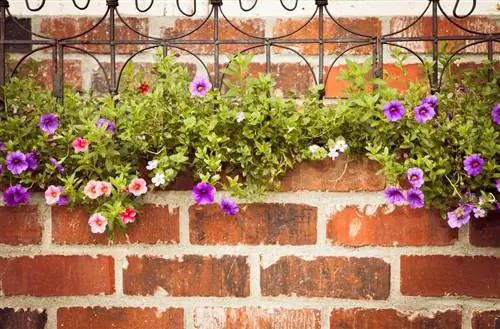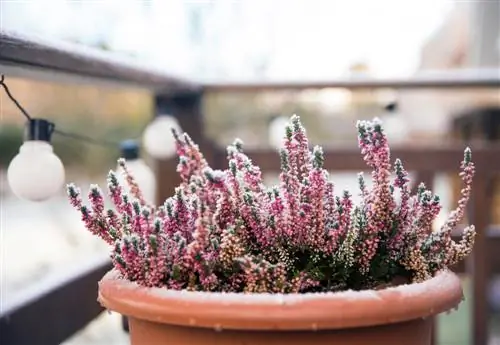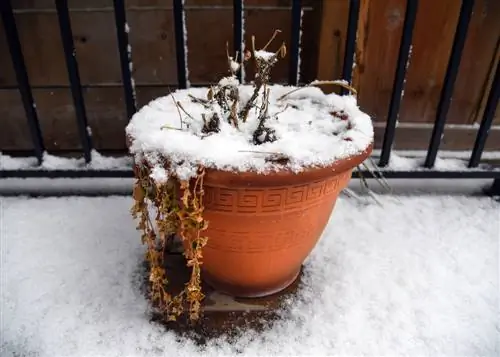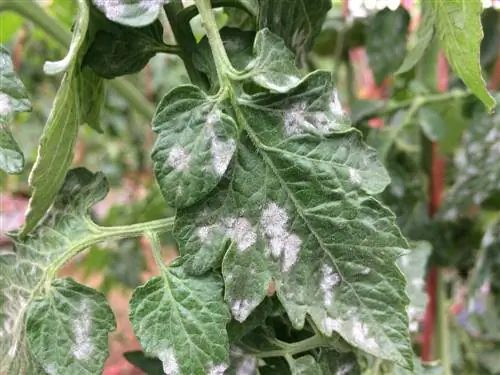- Author admin [email protected].
- Public 2023-12-16 16:46.
- Last modified 2025-01-23 11:20.
For optimal growth, petunias on the balcony not only need a lot of heat and light, but also enough water and nutrients. However, sometimes even despite optimal conditions, a larger infestation with diseases such as mildew can occur.

How to protect petunias from powdery mildew?
Petunias can be affected by downy mildew and powdery mildew. Both fungal diseases lead to spots and coatings on the leaves. Remove infected areas immediately, water close to the roots and choose a location for your petunias that is protected from rain.
Downy mildew
Downy mildew can be recognized by its light or brown spots on the tops of the leaves and by the mealy coating on the undersides of the leaves. A severe infestation can lead to plant death. Small infested areas should be cut out immediately to limit the spread. You should also choose a location for the petunias that is as protected from rain as possible. When watering the plants, you should never water the plants as a whole, but always water close to the roots.
Powdery mildew
Like downy mildew, powdery mildew is also a fungal disease, but primarily attaches itself to the tops of the leaves. The spread of the spores is promoted by the alternation between moisture and dry phases on the leaves and stems. If the affected areas are not removed, powdery mildew can not only cause the petunias to die, but can also spread to the following plant species:
- Begonias
- Dahlias
- Cucumbers
- Carrots
- Black Roots
Tip
Since downy mildew can also multiply on dead plant parts in the compost heap, if in doubt, cut plant parts should be disposed of with household waste.

